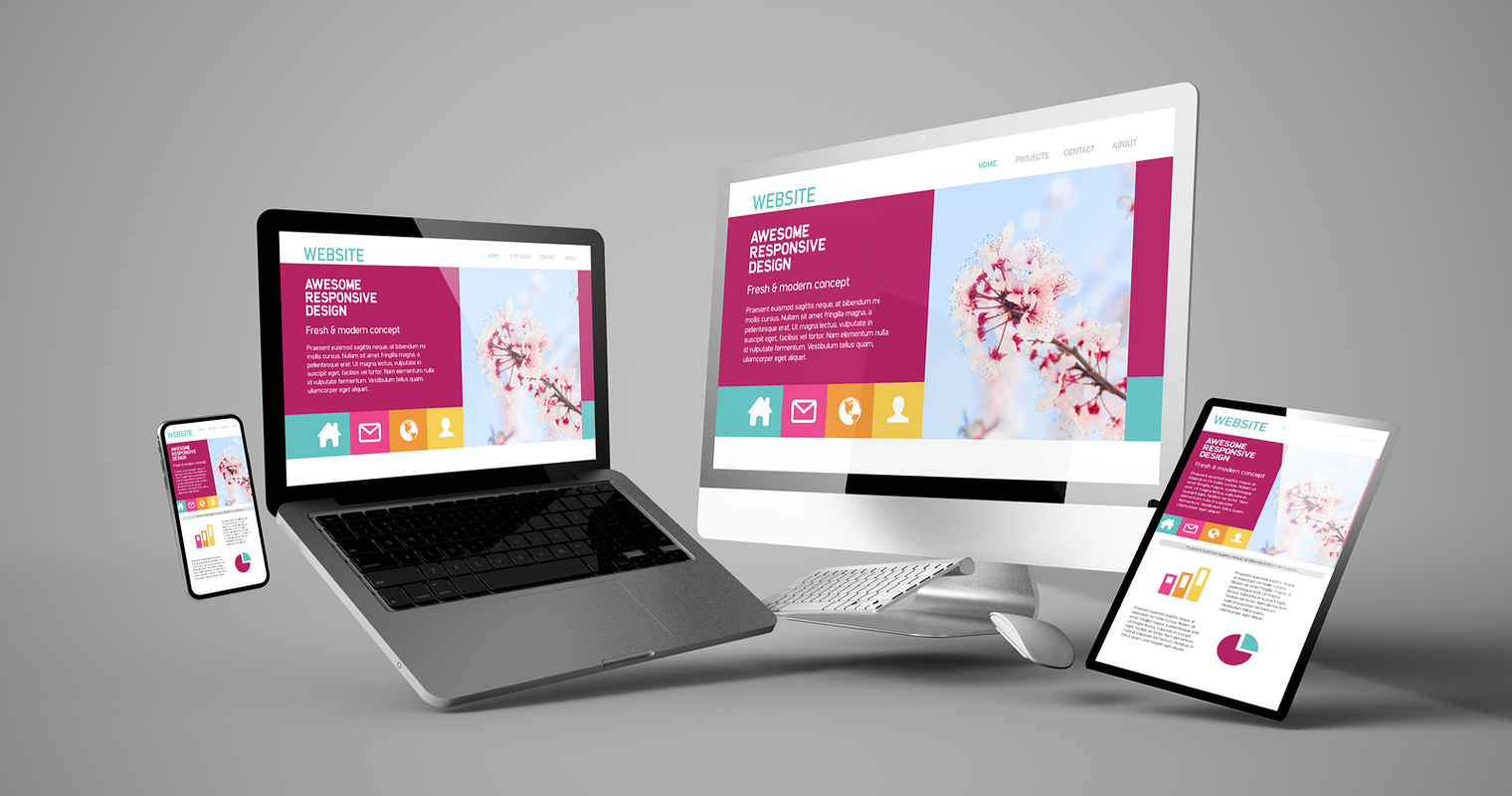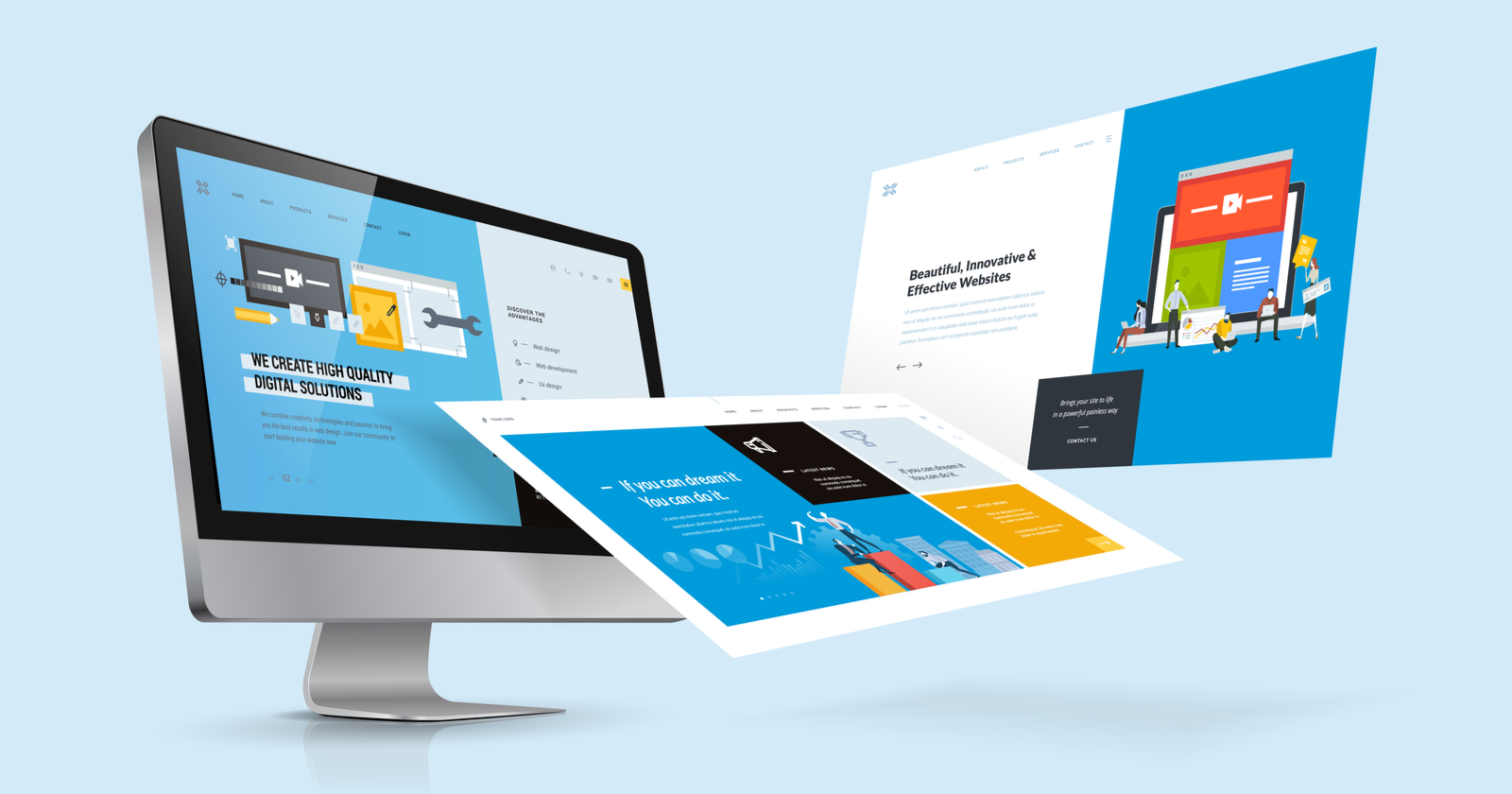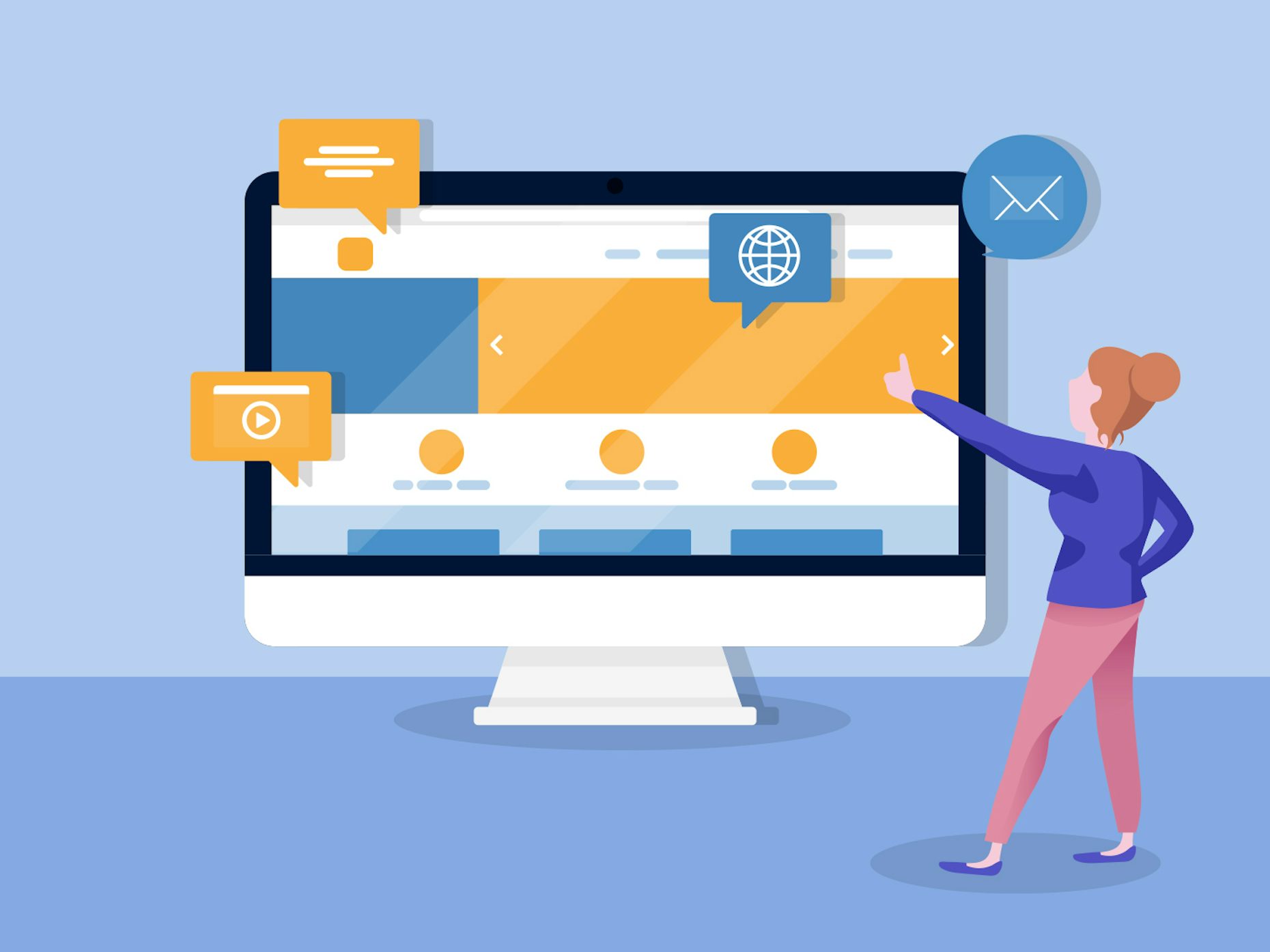All Categories
Featured
Table of Contents
- – Wicky Design: Philadelphia Web Design Tips and...
- – Redtree Web Design - Pittsburgh Tips and Tric...
- – Web Design - Website Design Tutorials, Articl...
- – What Does A Web Designer Do? - Careerexplorer...
- – Siteinspire - Web Design Inspiration Tips and...
- – Web Design Inspiration : The Best Website Des...
- – Ciw Web Design Series Tips and Tricks:
- – Beginner's Guide: How To Learn Web Design At...
- – Sustainable Web Design: Home Tips and Tricks:
- – What Is Web Design (And How Do I Get It Righ...
- – Top Web Design Agencies Ranked - 2022 Review...
Wicky Design: Philadelphia Web Design Tips and Tricks:
Quick summary Use and the energy, not the visual design, figure out the success or failure of a site. Considering that the visitor of the page is the only person who clicks the mouse and therefore decides everything, user-centric design has actually developed as a standard technique for successful and profit-oriented web style - web design frederick md.
and the utility, not the visual style, identify the success or failure of a site. Since the visitor of the page is the only person who clicks the mouse and therefore chooses whatever, user-centric style has actually become a basic method for effective and profit-oriented website design. If users can't utilize a function, it may as well not exist.
g. where the search box should be placed) as it has currently been done in a variety of articles; rather we concentrate on the techniques which, utilized effectively, can result in more sophisticated style decisions and simplify the procedure of viewing presented information. Please see that you may be thinking about the usability-related posts we have actually released prior to: Principles Of Excellent Website Style And Reliable Website Design Standards, In order to use the concepts properly we initially need to understand how users interact with sites, how they think and what are the basic patterns of users' habits.
Redtree Web Design - Pittsburgh Tips and Tricks:
Visitors look at each new page, scan a few of the text, and click on the first link that catches their interest or slightly resembles the thing they're looking for. In truth, there are large parts of the page they don't even take a look at. Most users look for something interesting (or helpful) and clickable; as quickly as some promising candidates are found, users click.
If a page provides users with premium content, they are willing to compromise the content with advertisements and the design of the website. This is the reason that not-that-well-designed websites with premium content get a great deal of traffic over years. Material is more important than the design which supports it.

Users do not check out, they scan. Notification how "hot" locations abrupt in the middle of sentences. This is normal for the scanning procedure. Very basic concept: If a website isn't able to meet users' expectations, then designer stopped working to get his task done properly and the business loses money. The higher is the cognitive load and the less intuitive is the navigation, the more willing are users to leave the website and search for options.
Web Design - Website Design Tutorials, Articles And Free Stuff Tips and Tricks:
Neither do they scan web page in a linear style, going sequentially from one website section to another one. Instead users satisfice; they choose the very first sensible alternative. As soon as they find a link that seems like it might lead to the goal, there is an excellent opportunity that it will be right away clicked.
It doesn't matter to us if we comprehend how things work, as long as we can utilize them. If your audience is going to act like you're designing billboard, then style terrific billboards." Users desire to have the ability to manage their web browser and count on the constant data presentation throughout the website.
If the navigation and site architecture aren't user-friendly, the number of concern marks grows and makes it harder for users to understand how the system works and how to obtain from point A to point B. A clear structure, moderate visual hints and quickly identifiable links can help users to find their course to their objective.
What Does A Web Designer Do? - Careerexplorer Tips and Tricks:

claims to be "beyond channels, beyond items, beyond circulation". What does it imply? Given that users tend to check out websites according to the "F"-pattern, these 3 declarations would be the very first elements users will see on the page once it is loaded. Although the style itself is easy and user-friendly, to comprehend what the page is about the user requires to look for the response.
When you've attained this, you can interact why the system is useful and how users can benefit from it. Do Not Squander Users' Perseverance, In every job when you are going to offer your visitors some service or tool, try to keep your user requirements minimal.
Novice visitors are prepared to, not filling long web types for an account they might never use in the future. Let users explore the site and discover your services without forcing them into sharing personal data. It's not affordable to force users to go into an email address to evaluate the function.
Siteinspire - Web Design Inspiration Tips and Tricks:
And that's what you want your users to feel on your web site. The registration can be done in less than 30 seconds as the kind has horizontal orientation, the user doesn't even require to scroll the page.
A user registration alone suffices of an impediment to user navigation to minimize inbound traffic. 3. Manage To Focus Users' Attention, As sites provide both fixed and dynamic material, some elements of the user interface attract attention more than others do. Certainly, images are more captivating than the text simply as the sentences marked as vibrant are more attractive than plain text.
Focusing users' attention to particular locations of the site with a moderate use of visual elements can assist your visitors to get from point A to point B without thinking of how it in fact is expected to be done. The less concern marks visitors have, the they have and the more trust they can develop towards the company the website represents.
Web Design Inspiration : The Best Website Design Ideas Tips and Tricks:
4. Make Every Effort For Feature Direct exposure, Modern website design are typically slammed due to their method of guiding users with visually appealing 1-2-3-done-steps, big buttons with visual impacts and so on. However from the design viewpoint these components in fact aren't a bad thing. On the contrary, such as they lead the visitors through the site material in a really simple and user-friendly way.
The website has 9 primary navigation choices which are noticeable at the very first look. What matters is that the content is well-understood and visitors feel comfortable with the method they interact with the system.
com gets straight to the point. No adorable words, no overemphasized declarations. Instead a rate: just what visitors are searching for. An optimal option for efficient writing is touse brief and succinct expressions (come to the point as quickly as possible), usage scannable layout (categorize the material, utilize several heading levels, use visual aspects and bulleted lists which break the circulation of consistent text blocks), usage plain and unbiased language (a promotion doesn't require to sound like ad; give your users some sensible and objective reason why they must use your service or remain on your site)6.
Ciw Web Design Series Tips and Tricks:
Users are hardly ever on a site to delight in the style; in addition, for the most part they are looking for the details despite the style - web design frederick md. Pursue simplicity rather of intricacy. From the visitors' point of view, the best site style is a pure text, without any ads or more content blocks matching exactly the inquiry visitors utilized or the material they have actually been searching for.
Finch plainly presents the information about the website and gives visitors an option of alternatives without overcrowding them with unneeded material. 7. Don't Hesitate Of The White Area, Really it's actually tough to overstate the value of white space. Not only does it assist to for the visitors, but it makes it possible to perceive the details presented on the screen.
Complex structures are harder to read, scan, analyze and work with. If you have the choice between separating two design sectors by a visible line or by some whitespace, it's generally better to use the whitespace service. (Simon's Law): the much better you manage to offer users with a sense of visual hierarchy, the simpler your content will be to perceive.
Beginner's Guide: How To Learn Web Design At Home - Medium Tips and Tricks:
The same conventions and rules need to be used to all elements.: do the most with the least quantity of cues and visual components. Four significant indicate be thought about: simpleness, clarity, distinctiveness, and focus. Simpleness includes just the aspects that are essential for communication. Clarity: all elements need to be developed so their meaning is not uncertain.
Conventions Are Our Buddies, Traditional design of website elements doesn't result in an uninteresting website. As they decrease the finding out curve, the requirement to figure out how things work. It would be an usability nightmare if all websites had various visual presentation of RSS-feeds. That's not that different from our regular life where we tend to get utilized to standard concepts of how we organize information (folders) or do shopping (placement of items).
understand what they're anticipating from a website navigation, text structure, search placement etc. A common example from usability sessions is to translate the page in Japanese (presuming your web users do not understand Japanese, e. g. with Babelfish) and provide your use testers with a job to find something in the page of different language.
Sustainable Web Design: Home Tips and Tricks:
Steve Krug suggests that it's better to, however make the most of conventions when you do not. 10. Test Early, Test Frequently, This so-called TETO-principle must be used to every website design project as usability tests frequently offer into significant problems and problems related to a given design. Test not too late, not insufficient and not for the incorrect reasons.
Some essential indicate bear in mind: according to Steve Krug, and screening one user early in the task is better than screening 50 near the end. Accoring to Boehm's first law, mistakes are most frequent during requirements and design activities and are the more costly the later on they are removed.
That suggests that you create something, test it, repair it and then check it again. There might be problems which have not been discovered throughout the very first round as users were virtually blocked by other issues.
What Is Web Design (And How Do I Get It Right)? - 99designs Tips and Tricks:

This holds for designers. After you have actually dealt with a site for few weeks, you can't observe it from a fresh perspective any longer. You understand how it is built and therefore you know precisely how it works you have the knowledge independent testers and visitors of your website would not have.
It can be linked to other locations such as graphic style, user experience, and multimedia arts, however is more aptly seen from a technological perspective. It has actually ended up being a large part of individuals's everyday lives. It is hard to imagine the Internet without animated graphics, different styles of typography, background, videos and music.

During 1991 to 1993 the World Wide Web was born. Text-only pages could be viewed using a basic line-mode browser. There had been no integrated technique to graphic design components such as images or sounds.
Top Web Design Agencies Ranked - 2022 Reviews - Clutch.co Tips and Tricks:
The W3C was produced in October 1994 to "lead the Web to its full capacity by establishing common procedures that promote its evolution and ensure its interoperability." This dissuaded any one business from monopolizing a propriety internet browser and programming language, which could have modified the impact of the World Wide Web as a whole.
As this has actually occurred the technology of the web has also carried on. There have actually likewise been significant changes in the method people use and access the web, and this has altered how sites are developed. Given that completion of the browsers wars [] brand-new web browsers have been launched. Numerous of these are open source suggesting that they tend to have faster advancement and are more supportive of new requirements.
Learn more about Lovell Media Group LLC or TrainACETable of Contents
- – Wicky Design: Philadelphia Web Design Tips and...
- – Redtree Web Design - Pittsburgh Tips and Tric...
- – Web Design - Website Design Tutorials, Articl...
- – What Does A Web Designer Do? - Careerexplorer...
- – Siteinspire - Web Design Inspiration Tips and...
- – Web Design Inspiration : The Best Website Des...
- – Ciw Web Design Series Tips and Tricks:
- – Beginner's Guide: How To Learn Web Design At...
- – Sustainable Web Design: Home Tips and Tricks:
- – What Is Web Design (And How Do I Get It Righ...
- – Top Web Design Agencies Ranked - 2022 Review...
Latest Posts
The Top Ecommerce, Website Design ... - Seattle Tips and Tricks:
Web Development Bachelor's Degree - Full Sail University Tips and Tricks:
The Top Ecommerce, Website Design ... - Seattle Tips and Tricks:
More
Latest Posts
The Top Ecommerce, Website Design ... - Seattle Tips and Tricks:
Web Development Bachelor's Degree - Full Sail University Tips and Tricks:
The Top Ecommerce, Website Design ... - Seattle Tips and Tricks: